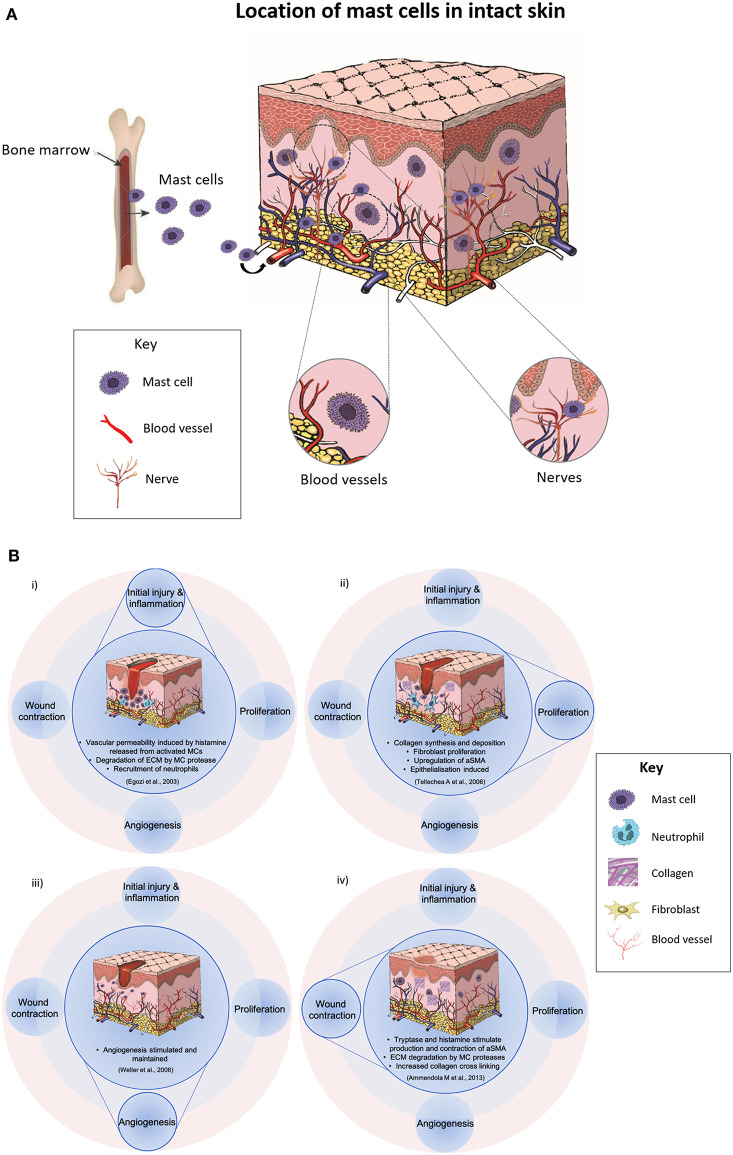Figure 1.
(A) A diagram displaying that mast cells are immune cells which originate from the stem cells in the bone marrow and they undergo the final stages of differentiation and maturation in their target tissues. They have widespread distribution in nearly all tissues and are often found in close proximity to fibroblasts, blood and lymphatic vessels and nerves. (B) Illustrations showing the possible role of mast cells (MC) in various phases of wound healing. (i) In the inflammatory phase, vascular permeability is induced by histamine released from activated mast cells, there is degradation of the extracellular matrix, and recruitment of neutrophils. (ii) In the proliferation phase, collagen synthesis, fibroblast proliferation, and epithelialisation are induced and αSMA is upregulated. (iii) Angiogenesis is stimulated by MC-derived mediators such as tryptase, histamine, and VEGF, and (iv) In the final phases of healing, MC mediators stimulate contraction of αSMA and increased collagen cross-linking.

